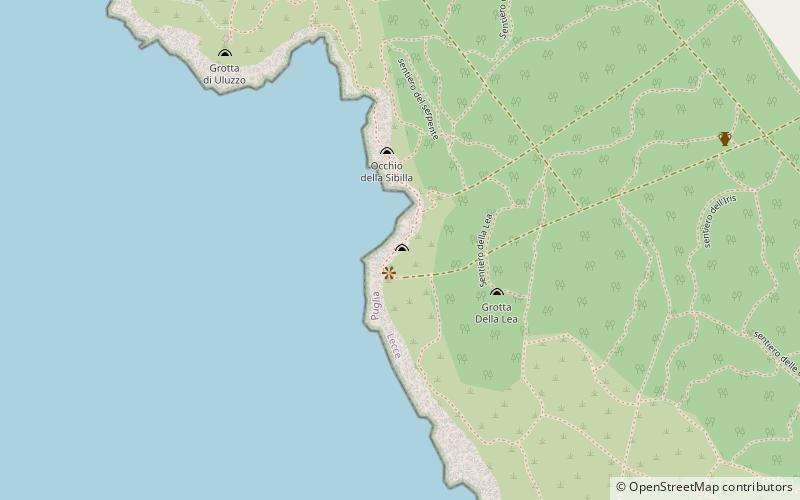Grotta del Cavallo


Facts and practical information
Nestled in the picturesque region of Puglia, Italy, the Grotta del Cavallo stands as a testament to the prehistoric human activity that once thrived within its depths. This cave, though unassuming in its exterior beauty, holds significant importance in the field of archaeology and human history.
Discovered in the 1960s, Grotta del Cavallo quickly became the subject of intense study due to the remarkable findings within its chambers. It is particularly renowned for housing some of the earliest evidence of modern humans (Homo sapiens) in Europe. These findings are underscored by the discovery of two baby teeth, which were later attributed to Homo sapiens and dated back to approximately 43,000 to 45,000 years ago.
The cave's interior reveals layers of occupation, with artifacts and remnants that tell a story of human evolution and cultural development over tens of thousands of years. The presence of Aurignacian tools, which are associated with early modern humans, further cements the Grotta del Cavallo's role as a key site in understanding the migration and settlement patterns of our ancestors.
For scholars and history enthusiasts alike, the Grotta del Cavallo offers a unique glimpse into the distant past, providing invaluable insights into the lives of the first Europeans. It is a place where the silent stones and buried relics speak volumes about the dawn of human civilization on the continent.
Apulia
Grotta del Cavallo – popular in the area (distance from the attraction)
Nearby attractions include: Nardò Cathedral, Torre dell'Alto, Torre Uluzzo, Torre Santa Caterina.








